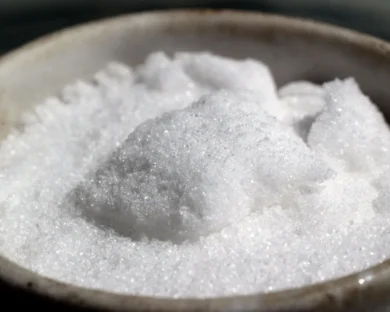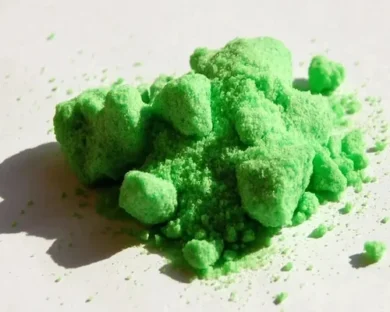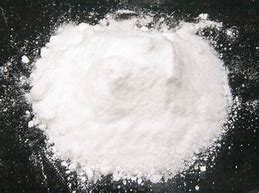Potassium Bi Fluoride
Potassium bifluoride
Potassium bifluoride, chemically represented as KHF2, is a white crystalline solid compound with a molecular weight of 78.10 g/mol. It is commonly utilized in various industrial applications due to its unique properties. Potassium bifluoride is notably known for its solubility in water, making it a crucial ingredient in etching and metal surface treatment processes. Its ability to dissolve in water also renders it suitable for use in the manufacturing of cleaning agents and fluxes for soldering. Moreover, it serves as a precursor in the synthesis of other fluoride compounds, contributing significantly to the production of diverse chemical compounds.
In addition to its industrial applications, potassium bifluoride finds utility in certain niche areas such as the treatment of textiles and ceramics. In textile processing, it aids in the removal of impurities and enhances the dyeing properties of fabrics. Its use in ceramics involves its incorporation into glazes to modify their properties and improve their adherence to ceramic surfaces. Despite its wide-ranging applications, proper handling and storage of potassium bifluoride are imperative due to its corrosive nature, necessitating careful consideration of safety protocols during its use in various processes.USES AND APPLICATIONS FOR Potassium Bi Fluoride
INDUSTRIES
It is used in numerous industrial applications like:-
- Used in Metal Surface Treatment
- Used in Electronics Manufacturing
- Used in Chemical Synthesis
- Used in Cleaning Agents
- Used in Textile Processing
- Used in Ceramics and Glass
- Used in Oil and Gas
Potassium Bi Fluoride, or KHF2, is a chemical compound containing potassium, hydrogen, and fluorine. It’s well-known for its versatility and is used in diverse industries thanks to its unique properties.
Potassium Bi Fluoride has the chemical formula KHF2, indicating one potassium (K) atom, one hydrogen (H) atom, and two fluorine (F) atoms. It forms a white, crystalline powder with a high melting point.
The compound is highly soluble in water, which contributes to its ease of use in different processes.
The synthesis of potassium involves reacting hydrofluoric acid (HF) with potassium carbonate (K2CO3) or potassium hydroxide (KOH). This reaction results in the formation of Potassium Bi Fluoride and water.
Uses:
- Metal Surface Treatment: Potassium Bifluoride is commonly used in metal surface treatment processes, particularly for aluminum and its alloys. It acts as an etchant, removing oxides and impurities from metal surfaces prior to further treatment such as coating, painting, or bonding. The compound’s ability to selectively dissolve aluminum oxide makes it an essential component in metal cleaning and preparation processes.
- Glass Etching: In the glass industry, potassium bifluoride is employed as an etchant for glass surfaces. It is used to create frosted or matte finishes on glassware, decorative glass items, and electronic display panels. By selectively removing thin layers of glass, potassium bifluoride enables precise etching patterns and designs, enhancing the aesthetic appeal of glass products.
- Welding Flux: Potassium bifluoride is utilized as a flux in welding applications, particularly in aluminum welding processes. As a flux, it helps to remove surface oxides and contaminants from the metal, ensuring proper wetting and adhesion of the welding filler material. This improves the quality and integrity of welded joints in aluminum structures and components.
- Electroplating: In electroplating processes, potassium bifluoride serves as a key component in electrolyte solutions. It helps to maintain the desired pH level and conductivity of the electrolyte, facilitating the deposition of metal coatings onto substrates. Potassium bifluoride-containing electrolytes are commonly used for electroplating applications involving metals such as nickel, zinc, and copper.
- Fluorination Reagent: Potassium bifluoride is employed as a fluorination reagent in organic synthesis and chemical manufacturing processes. It reacts with organic compounds containing functional groups such as hydroxyl (-OH) or carbonyl (C=O) groups to introduce fluorine atoms into the molecular structure. This fluorination reaction can modify the properties of organic molecules, leading to the synthesis of fluorinated compounds with specific chemical and physical properties.
- Catalyst in Organic Reactions: In certain organic transformations, potassium bifluoride acts as a catalyst or co-catalyst, promoting the progress of chemical reactions. It is particularly useful in reactions involving fluorination, deprotection of functional groups, and ring-opening reactions in organic synthesis. The presence of potassium bifluoride can enhance reaction rates, yield, and selectivity in various chemical processes.
- Dental Applications: Potassium bifluoride is utilized in dental care products, particularly in dental etchants used for enamel conditioning prior to bonding procedures. It helps to create micro-roughened surfaces on teeth, enhancing the adhesion of dental restorative materials such as composites and sealants. Dental etchants containing potassium bifluoride are essential for achieving durable and long-lasting dental restorations.
- pH Adjustment Agent: Due to its acidic nature, potassium bifluoride is employed as a pH adjustment agent in various industrial and laboratory applications. It can be added to acidic solutions to control and stabilize their pH levels, ensuring optimal conditions for chemical reactions, analytical procedures, and industrial processes.
- Fluoride Source in Water Treatment: In some water treatment processes, potassium bifluoride is utilized as a source of fluoride ions for fluoridation purposes. Fluoride-containing compounds like potassium bifluoride help to prevent dental cavities and promote dental health when added to drinking water in controlled concentrations.
Contact us for Details of SNDB Chemicals.




